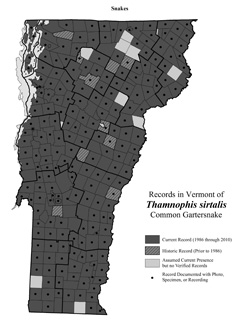Thamnophis sirtalis
Common Gartersnake
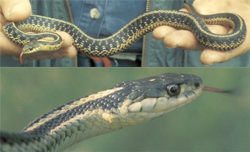
Photos taken by Jim Andrews.
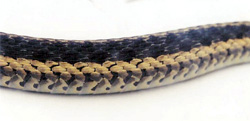
Photo taken by Lynn Morgan.
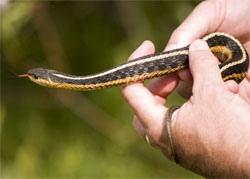
Photo taken by K. Briggs.
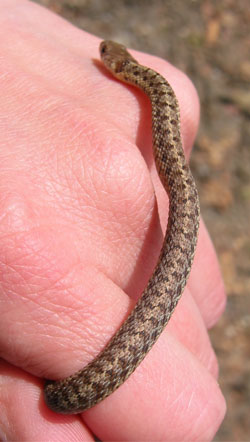
Photo taken by Jim Andrews.
Note brown overall tinting and more distinct patterning.
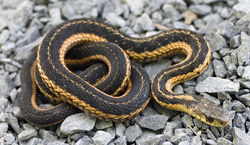
Photo taken by K. Briggs.
Note narrower back stripe/wider and quite dark side stripes.

Photo taken by K. Briggs.
This snake doesn't show the V-stripe. It may also be about to shed (evidenced by the cloudy covering over the eye).
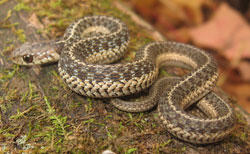
Photo taken by K. Briggs.
Note the brownish hue and more clear checkerboard pattern.
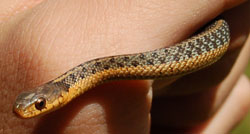
Photo taken by N. Arms.
Note the reddish tint along the lower sides.
More images from google
Identification
The Gartersnake has three length-wise yellowish stripes, one on the center of the back and one on each side. The side stripes are low on the sides (scale rows 2 and 3). Portions of the stripes can be missing. The background color can be green, black, brown, or anywhere in between. A checkerboard pattern may be visible on the sides between the stripes. The head is dark olive green with a yellow upper lip. The tail is about 1/5 of the total length. They are usually 2-3 feet long (the longest documented in Vermont is 35 inches), with keeled scales.
Range/Habitat
The Common Garternsake is widespread at all elevations statewide in appropriate habitat. Those habitats vary widely, although it is often near water.
Status
This species has a state natural heritage rank of S5. It is by far the most common snake in the state. Please report sightings of this species in Vermont if you have not reported them within the last five years from a given location. Any natural history observations (feeding, migrations, road crossing areas, early or late season appearance, abnormalities, etc.) are appreciated. Photographs are always helpful, particularly if your report is the first report of this species from a town.
More Info
- Thamnophis sirtalis at the Animal Diversity website
- Thamnophis sirtalis sirtalis at the CARCNET website
- Thamnophis sirtalis at the Snakes of Massachusetts website
Species summary written by Kaile Burgess.
